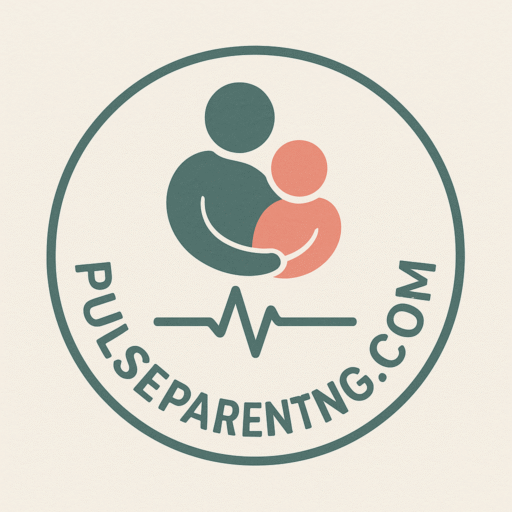A mom of a just-turned-three-year-old posted a raw confession: she tried to parent gently and foster independence, but now her child melts down at limits, hits, and screams. She has BPD, worries she’s repeating her own childhood patterns, and feels ashamed that she can’t bounce from being hit to offering cuddles. The thread exploded with empathy and pragmatic advice. https://www.reddit.com/r/Parenting/comments/1nxkqdg/i_feel_like_i_broke_my_son_and_guilt_and_shame/
Here’s the distilled wisdom—clear takeaways you can use today.
1) Three is chaotic—and normal
- Tantrums, hitting, shrieking “NO,” and boundary-testing peak around 2.5–4. It’s development, not moral failure.
- Meltdowns after a “no” are evidence the boundary is clear, not that you’re doing it wrong.
- Your child’s job at three is to have big feelings; your job is to be the sturdy adult who contains them.
Mindset swap: They’re not giving me a hard time; they’re having a hard time.
2) Gentle ≠ Permissive: kids still need fences
- Many commenters noted a common trap: calling it “gentle” when it’s really hands-off.
- Gentle parenting = warm connection and firm boundaries, delivered calmly and consistently.
- Predictability beats perfection. Pick a few rules (no hitting; snack routine; bedtime) and hold them every time.
Expect an “extinction burst.” When you start holding a boundary consistently, the behavior often spikes before it fades. Stay the course.
3) Detach from the drama; keep the boundary
- Think “calm robot”: brief, neutral, confident.
- Validate feelings, don’t negotiate the limit.
- It’s okay to ignore a tantrum (while keeping them safe). Comfort when they’re ready; lecture never works mid-storm.
Mini-script:
“Grapes do look yummy. We’ll have them with dinner. You’re upset—makes sense. I’m here. When your body is calm, we can read.”
4) Words matter: correct the behavior, not the child
- Avoid identity labels (“you’re bad”). Name specific actions and their impact, then show what to do instead.
- Model repair. Apologize for your missteps. Kids learn accountability by seeing it.
Swap these:
- “You were bad.” → “Hitting hurts. I won’t let you hit. Let’s practice gentle hands.”
- “No grapes before dinner.” → “Yes to grapes with dinner. Want to wash them with me?”
5) Boundaries as teaching tools (not punishments)
- Limits are instruction, not retribution. A calm “no” is enough; the consequence is not getting the thing.
- Short, predictable resets help everyone: a safe “calm space,” one-minute timeouts, or pausing play—then reconnect.
Connection after correction: Hug, name the feeling, restate the boundary, and move on.
6) Pick your battles (especially with food)
- Ask, “What’s the real concern?” If grapes won’t derail dinner, collaborate: two grapes now; the rest on the plate later.
- Offer bounded choices: “Red bowl or blue?” “Walk or piggyback to bath?” Choice satisfies autonomy without ceding the plan.
7) Your regulation is the blueprint
- The thread’s strongest theme: parents need tools, too.
- If you have BPD (or any trauma history), DBT/therapy, parent coaching, and nervous-system strategies (breathing, body breaks, music, a five-minute reset) are not luxuries—they’re protective gear.
- It’s human to feel cold or angry after being hit. Step away briefly if needed. Repair later.
Self-talk: “My child’s feelings are big; my boundary is bigger. I can be sturdy and kind.”
8) Safety, supports, and special cases
- If something feels beyond “typical three,” consider screenings (speech/language, ND traits, ADHD, sensory).
- Coordinate with co-parents/teachers for consistent responses.
- Be mindful introducing new partners; prioritize your child’s stability and attachment.
Red flags needing professional help: escalating aggression, self-harm talk, regression with loss of skills, or caregiver rage that feels unmanageable.
9) Five tiny tools that work at three
- Yes-Later: “Yes to ___ after ___.”
- Two Choices: both acceptable to you.
- State + Stop: “I won’t let you hit. I’m moving back now.”
- Name + Normalize: “You’re furious. It’s hard to stop.”
- Repair Routine: “We both yelled. I’m sorry. Next time I’ll take a breath. You can stomp feet, not hit.”
10) A 7-day reset you can start tonight
- Day 1: Choose 3 house rules. Write them where you see them.
- Day 2: Create a calm space (pillow, book, soft light). Rehearse using it while calm.
- Day 3: Food flow: parent chooses meals; child chooses snacks from a small, pre-set selection.
- Day 4: Practice one micro-script (“Yes with dinner,” “I won’t let you hit”) in play; praise yourself for using it once.
- Day 5: Build a 10-minute connection ritual (silly play, reading) that’s independent of behavior.
- Day 6: Plan your parent timeout: where you go, what you do (breathe, water, stretch).
- Day 7: Review: what triggered meltdowns? What held? Keep what worked; trim the rest.
The bottom line
You didn’t “break” your child. You’re in the threenager crucible where nervous systems are loud and skills are young. What matters most isn’t perfect calm—it’s sturdy, repeatable boundaries, compassionate repair, and your willingness to get support. That’s how cycles break and resilience grows.
You’re not failing. You’re learning the hardest part of parenting: being the steady one when someone small is falling apart—and then trying again tomorrow.
